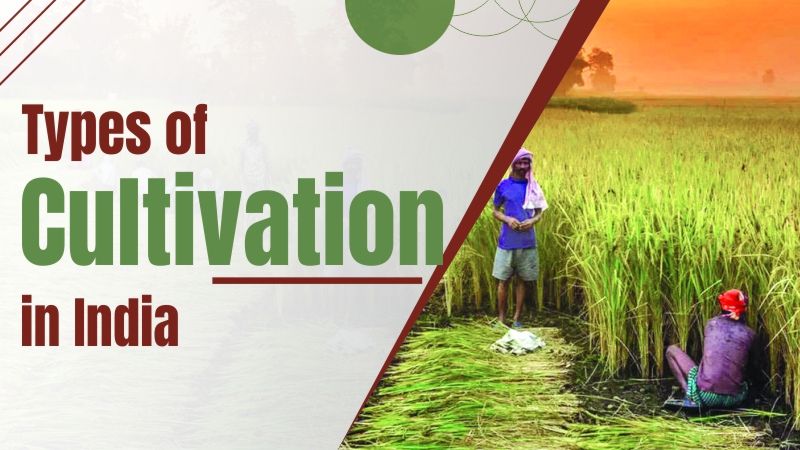Introduction to Analytics as a Service (AaaS)
In today's data-driven world, businesses are continually seeking efficient ways to gather, analyze, and leverage information for smarter decision-making. Analytics as a Service (AaaS) has emerged as a game-changing solution, providing cloud-based analytics tools that empower organizations to derive actionable insights without maintaining complex on-premises infrastructure. AaaS offers a seamless, cost-effective, and scalable approach to harnessing the power of big data, making advanced analytics accessible to businesses of all sizes.
The Core Concept of Analytics as a Service
At its core, AaaS is a cloud-based model that delivers data analytics capabilities via the internet. Instead of investing in expensive hardware and dedicated IT teams, businesses can subscribe to an AaaS platform and instantly access powerful analytics tools. These tools can include dashboards, machine learning models, and visualization capabilities, all hosted on cloud infrastructure. AaaS simplifies data management by allowing companies to focus on analysis and strategy rather than infrastructure maintenance.
Benefits of Using Analytics as a Service
One of the key advantages of AaaS is its scalability. Organizations can easily scale their analytics needs based on current demands, which is especially beneficial for growing businesses. Cost efficiency is another major benefit; since services are cloud-based and subscription-driven, there’s no need for heavy upfront investments. Moreover, AaaS provides real-time analytics, enabling faster and more informed decisions. The service also enhances collaboration by allowing multiple users to access and interact with data in real time, regardless of their location.
Accessibility and Integration with Cloud Ecosystems
A major advantage of AaaS is its seamless integration with existing cloud ecosystems. Whether an organization uses AWS, Microsoft Azure, or Google Cloud, AaaS platforms can easily connect with cloud storage, computing power, and third-party applications. This compatibility reduces the need for custom development and promotes smoother workflows. Furthermore, accessibility via web browsers and mobile apps ensures that insights are always within reach, empowering stakeholders to make informed decisions from anywhere.
Overcoming Challenges with AaaS Adoption
While the benefits of AaaS are vast, its adoption does come with some challenges. Data integration from disparate sources can be complex without proper planning. Additionally, organizations must address data governance and ensure compliance with regulations like GDPR. Vendor lock-in is another potential risk, making it crucial to choose flexible and transparent AaaS providers. However, with the right strategy and support, these challenges can be effectively mitigated, ensuring a successful AaaS implementation.
The Future of AaaS in a Digital-First World
As digital transformation accelerates, the role of Analytics as a Service will become increasingly central. With the growth of IoT devices, social media data, and advanced AI algorithms, the need for real-time, scalable analytics is rising. AaaS platforms will continue evolving to support more complex use cases, offering deeper integrations and more powerful analytics engines. Organizations that embrace AaaS today are setting themselves up for future success by fostering a culture of data-driven innovation.
Source - https://www.marketresearchfuture.com/reports/analytics-as-a-service-market-1206
Conclusion
Analytics as a Service is redefining how businesses interact with data. By eliminating infrastructure barriers and offering scalable, on-demand analytics tools, AaaS democratizes data insights across industries. Whether for enhancing customer experiences, optimizing operations, or driving innovation, AaaS provides the foundation for agile, informed decision-making. As businesses continue to prioritize speed and intelligence, Analytics as a Service stands out as a vital ally in the journey toward smarter digital operations.
In today's data-driven world, businesses are continually seeking efficient ways to gather, analyze, and leverage information for smarter decision-making. Analytics as a Service (AaaS) has emerged as a game-changing solution, providing cloud-based analytics tools that empower organizations to derive actionable insights without maintaining complex on-premises infrastructure. AaaS offers a seamless, cost-effective, and scalable approach to harnessing the power of big data, making advanced analytics accessible to businesses of all sizes.
The Core Concept of Analytics as a Service
At its core, AaaS is a cloud-based model that delivers data analytics capabilities via the internet. Instead of investing in expensive hardware and dedicated IT teams, businesses can subscribe to an AaaS platform and instantly access powerful analytics tools. These tools can include dashboards, machine learning models, and visualization capabilities, all hosted on cloud infrastructure. AaaS simplifies data management by allowing companies to focus on analysis and strategy rather than infrastructure maintenance.
Benefits of Using Analytics as a Service
One of the key advantages of AaaS is its scalability. Organizations can easily scale their analytics needs based on current demands, which is especially beneficial for growing businesses. Cost efficiency is another major benefit; since services are cloud-based and subscription-driven, there’s no need for heavy upfront investments. Moreover, AaaS provides real-time analytics, enabling faster and more informed decisions. The service also enhances collaboration by allowing multiple users to access and interact with data in real time, regardless of their location.
Accessibility and Integration with Cloud Ecosystems
A major advantage of AaaS is its seamless integration with existing cloud ecosystems. Whether an organization uses AWS, Microsoft Azure, or Google Cloud, AaaS platforms can easily connect with cloud storage, computing power, and third-party applications. This compatibility reduces the need for custom development and promotes smoother workflows. Furthermore, accessibility via web browsers and mobile apps ensures that insights are always within reach, empowering stakeholders to make informed decisions from anywhere.
Overcoming Challenges with AaaS Adoption
While the benefits of AaaS are vast, its adoption does come with some challenges. Data integration from disparate sources can be complex without proper planning. Additionally, organizations must address data governance and ensure compliance with regulations like GDPR. Vendor lock-in is another potential risk, making it crucial to choose flexible and transparent AaaS providers. However, with the right strategy and support, these challenges can be effectively mitigated, ensuring a successful AaaS implementation.
The Future of AaaS in a Digital-First World
As digital transformation accelerates, the role of Analytics as a Service will become increasingly central. With the growth of IoT devices, social media data, and advanced AI algorithms, the need for real-time, scalable analytics is rising. AaaS platforms will continue evolving to support more complex use cases, offering deeper integrations and more powerful analytics engines. Organizations that embrace AaaS today are setting themselves up for future success by fostering a culture of data-driven innovation.
Source - https://www.marketresearchfuture.com/reports/analytics-as-a-service-market-1206
Conclusion
Analytics as a Service is redefining how businesses interact with data. By eliminating infrastructure barriers and offering scalable, on-demand analytics tools, AaaS democratizes data insights across industries. Whether for enhancing customer experiences, optimizing operations, or driving innovation, AaaS provides the foundation for agile, informed decision-making. As businesses continue to prioritize speed and intelligence, Analytics as a Service stands out as a vital ally in the journey toward smarter digital operations.
Introduction to Analytics as a Service (AaaS)
In today's data-driven world, businesses are continually seeking efficient ways to gather, analyze, and leverage information for smarter decision-making. Analytics as a Service (AaaS) has emerged as a game-changing solution, providing cloud-based analytics tools that empower organizations to derive actionable insights without maintaining complex on-premises infrastructure. AaaS offers a seamless, cost-effective, and scalable approach to harnessing the power of big data, making advanced analytics accessible to businesses of all sizes.
The Core Concept of Analytics as a Service
At its core, AaaS is a cloud-based model that delivers data analytics capabilities via the internet. Instead of investing in expensive hardware and dedicated IT teams, businesses can subscribe to an AaaS platform and instantly access powerful analytics tools. These tools can include dashboards, machine learning models, and visualization capabilities, all hosted on cloud infrastructure. AaaS simplifies data management by allowing companies to focus on analysis and strategy rather than infrastructure maintenance.
Benefits of Using Analytics as a Service
One of the key advantages of AaaS is its scalability. Organizations can easily scale their analytics needs based on current demands, which is especially beneficial for growing businesses. Cost efficiency is another major benefit; since services are cloud-based and subscription-driven, there’s no need for heavy upfront investments. Moreover, AaaS provides real-time analytics, enabling faster and more informed decisions. The service also enhances collaboration by allowing multiple users to access and interact with data in real time, regardless of their location.
Accessibility and Integration with Cloud Ecosystems
A major advantage of AaaS is its seamless integration with existing cloud ecosystems. Whether an organization uses AWS, Microsoft Azure, or Google Cloud, AaaS platforms can easily connect with cloud storage, computing power, and third-party applications. This compatibility reduces the need for custom development and promotes smoother workflows. Furthermore, accessibility via web browsers and mobile apps ensures that insights are always within reach, empowering stakeholders to make informed decisions from anywhere.
Overcoming Challenges with AaaS Adoption
While the benefits of AaaS are vast, its adoption does come with some challenges. Data integration from disparate sources can be complex without proper planning. Additionally, organizations must address data governance and ensure compliance with regulations like GDPR. Vendor lock-in is another potential risk, making it crucial to choose flexible and transparent AaaS providers. However, with the right strategy and support, these challenges can be effectively mitigated, ensuring a successful AaaS implementation.
The Future of AaaS in a Digital-First World
As digital transformation accelerates, the role of Analytics as a Service will become increasingly central. With the growth of IoT devices, social media data, and advanced AI algorithms, the need for real-time, scalable analytics is rising. AaaS platforms will continue evolving to support more complex use cases, offering deeper integrations and more powerful analytics engines. Organizations that embrace AaaS today are setting themselves up for future success by fostering a culture of data-driven innovation.
Source - https://www.marketresearchfuture.com/reports/analytics-as-a-service-market-1206
Conclusion
Analytics as a Service is redefining how businesses interact with data. By eliminating infrastructure barriers and offering scalable, on-demand analytics tools, AaaS democratizes data insights across industries. Whether for enhancing customer experiences, optimizing operations, or driving innovation, AaaS provides the foundation for agile, informed decision-making. As businesses continue to prioritize speed and intelligence, Analytics as a Service stands out as a vital ally in the journey toward smarter digital operations.
0 Reacties
0 aandelen
3K Views
0 voorbeeld









